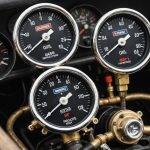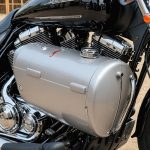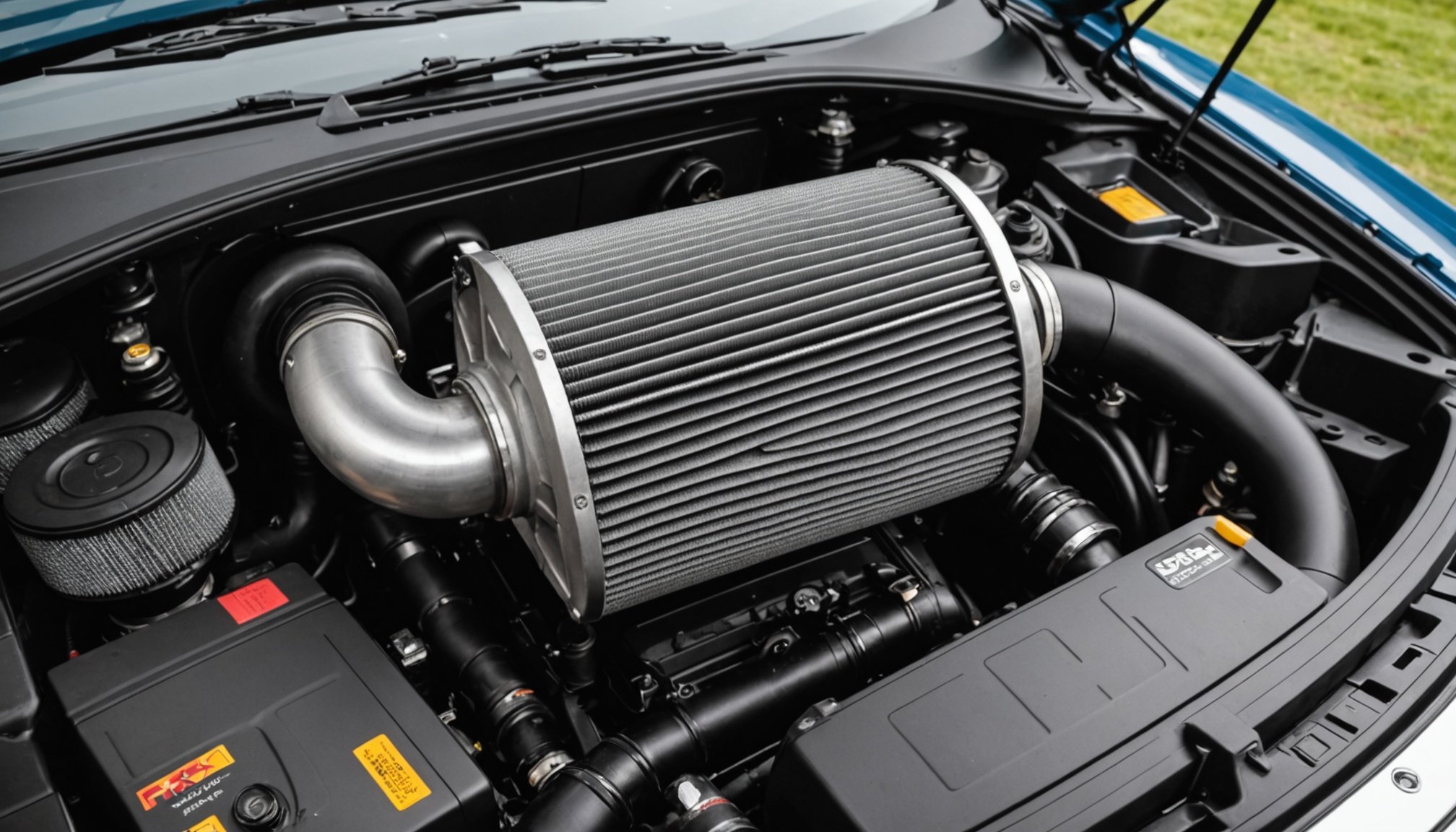Understanding Air Intake Systems
Air intake systems play a vital role in vehicle performance by supplying the engine with the necessary air for combustion. Think of them as the engine’s lungs, ensuring a steady flow of air for optimal engine functioning. The efficiency of this air flow directly affects engine performance, which makes understanding these systems crucial for anyone interested in performance upgrades or efficiency improvements.
In vehicles, the main role of the air intake system is to filter, cool, and optimise airflow so that the engine can “breathe” effectively. This is important because a well-designed air intake system can improve airflow, increasing fuel burn efficiency.
In parallel : Perfecting headlight alignment for classic british cars: your essential guide to uk road compliance
When comparing stock and aftermarket air intake systems, the primary difference lies in their design and function. Stock systems are engineered for general use, prioritising reliability and cost. On the other hand, aftermarket systems focus on enhancing airflow to maximise engine performance. They often offer better filtration, cooler air intake, and reduced air resistance, which can lead to performance upgrades in terms of horsepower and efficiency improvements. Understanding these differences can guide informed decisions when considering enhancements to a vehicle’s air intake system.
Benefits of Upgrading Your Air Intake System
Upgrading your air intake system can lead to substantial performance benefits. One of the most immediate advantages is the improvement in horsepower and torque metrics. By allowing more air into the engine, aftermarket systems enhance combustion, resulting in more power and quicker acceleration.
Also to see : Ultimate guide to understanding and tuning oil pressure in british classic cars
Moreover, an upgraded air intake system can significantly impact fuel efficiency and mileage. Better airflow means the engine doesn’t have to work as hard to pull in air, leading to more efficient fuel usage and potential savings at the pump. These enhancements make it an attractive consideration for those looking to optimise vehicle performance and efficiency.
Another benefit lies in the potential impacts on engine longevity and maintenance needs. With improved filtration and cooler air intake, engines remain cleaner and more stable, potentially prolonging their lifespan. By reducing the build-up of contaminants and ensuring consistent air temperatures, aftermarket systems can minimise wear and tear, leading to reduced maintenance needs over time.
In sum, upgrading your air intake system presents compelling arguments for both immediate performance improvements and long-term vehicle care. These factors make it a worthwhile investment for performance enthusiasts and everyday drivers alike.
Step-by-Step Installation Guide
Installing an upgraded air intake can be a rewarding DIY project. Before starting, knowing the tools and materials needed is essential for a smooth installation. Typical requirements include a socket set, screwdrivers, and a new air intake system designed for your vehicle model.
Required Tools and Materials
Begin by gathering:
- A socket wrench set
- Flathead and Phillips screwdrivers
- New air intake system
Having these on hand will help avoid interruptions during the process.
Preparing the Vehicle for Installation
Next, safely prepare your vehicle. Ensure it is parked on a level surface with the engine turned off. Remove the battery negative cable to prevent any accidental electrical issues. Clear the engine bay of debris or obstacles for easier access to the air intake components.
Step-by-Step Installation Process
-
Remove the Stock Air Intake:
Loosen clamps and use a socket wrench to detach the existing system. Careful handling is crucial to prevent damage to connected sensors or hoses. -
Install the New System:
Follow the manufacturer’s guidelines to attach the aftermarket system. Secure all clamps and ensure fitment is snug, avoiding any air leaks. -
Reconnect the Battery:
Once installed, reconnect the battery cable and double-check all connections for stability.
Finally, test your vehicle to ensure everything functions correctly.
Recommended Products for UK Family Hatchbacks
Choosing the right aftermarket products for your UK family hatchback is pivotal in enhancing vehicle performance. Popular air intake systems such as the K&N 57s and the AEM Cold Air Intake are well-regarded for their easy installation and noticeable efficiency improvements. These systems are designed to optimise airflow and, consequently, engine performance.
Key Features to Look For
When selecting an air intake system, consider these factors:
- Improved Filtration: Opt for systems with high-efficiency filters that protect your engine from contaminants.
- Material Quality: Look for durable materials like stainless steel or aluminium to ensure longevity.
- Ease of Installation: Systems that require minimal modification save time and reduce installation complexity.
Comparisons in Pricing and Performance
- K&N 57s, for example, offers a balance between performance gains and affordability, often preferred for its user-friendly design and reliability.
- AEM, though slightly pricier, provides superior performance enhancements and sleek design, resulting in a higher initial investment.
Understanding these key features and performance comparisons will guide your decision, ensuring you choose a product that best suits your needs and enhances your vehicle’s overall capability.
Aftermarket vs. Stock Air Intake Systems
When debating between aftermarket and stock air intake systems, understanding the performance comparison offers clarity on potential benefits. Aftermarket systems generally provide enhanced air flow, translating to increased horsepower and improved engine efficiency. These modifications often include high-performance filters and smoother air passages, reducing resistance and promoting better combustion.
Stock systems, on the other hand, are designed for reliability and affordability. While they ensure stable vehicle operation, their conservative design often limits performance enhancements. For those seeking noticeable efficiency improvements, aftermarket systems may be the more attractive option.
However, it’s crucial to consider potential disadvantages. Modifying a vehicle’s air intake can occasionally void warranties or lead to compatibility issues, making thorough cost-benefit analysis indispensable. Aftermarket systems can be pricier initially, but the return includes performance upgrades and possible fuel savings over time.
Ultimately, the decision hinges on individual priority: reliable everyday use or extreme performance enhancements. Analyse the cost in relation to expected performance gains to make an informed choice. Balancing initial expenses against long-term benefits ensures a strategically sound investment in your vehicle’s engine dynamics.
Performance Gains and Testing
Upgrading your air intake system can yield noticeable air intake improvements, and understanding these performance changes is essential for evaluating their benefits. To gauge the performance testing, one can measure alterations in engine dynamics like horsepower and torque before and after the upgrade.
Measuring Performance Changes
Begin by conducting a baseline test of your vehicle’s performance metrics, noting the current horsepower and torque figures. Post-installation, repeat the test under similar conditions to assess any modifications.
One common method for directly evaluating performance testing is using a dynamometer. This tool helps capture accurate data on how air intake improvements influence engine output.
Real-World Examples
For instance, several UK hatchback owners have reported significant engine dynamics improvement post-upgrade, such as increased acceleration rates and smoother power delivery. These real-world case studies highlight the practicality of such upgrades, especially when paired with performance testing results.
Testing your newly installed system not only confirms the benefits but also provides data to justify further performance testing endeavours and air intake improvements in your vehicle, offering both empirical and experiential insights into your enhanced engine dynamics.
Cost and Compatibility Considerations
When exploring air intake upgrades, understanding cost analysis and compatibility checks is crucial. Factors affecting cost include quality, brand reputation, and design sophistication. High-end models offer superior durability and precision but come at a premium. Budget upgrades are available, but may lack long-term reliability. Conduct a thorough cost analysis to weigh initial expenses against potential savings from enhanced fuel efficiency and longevity.
Compatibility checks ensure that your chosen air intake system aligns with your vehicle’s make and model. Each system is typically designed for specific engine types, and failing to verify compatibility can lead to installation issues or suboptimal performance. Most manufacturers provide guidelines to assist in confirming suitable matches for various UK hatchback models.
Considering the long-term financial implications is equally important. Upgraded systems can deliver savings through improved fuel efficiency, reducing overall running costs. While investing in an air intake upgrade may seem substantial initially, the benefits from decreased fuel consumption and extended engine lifespan contribute to a financially sound decision over time. For these reasons, a balanced approach—considering both upfront costs and future savings—is advisable.











